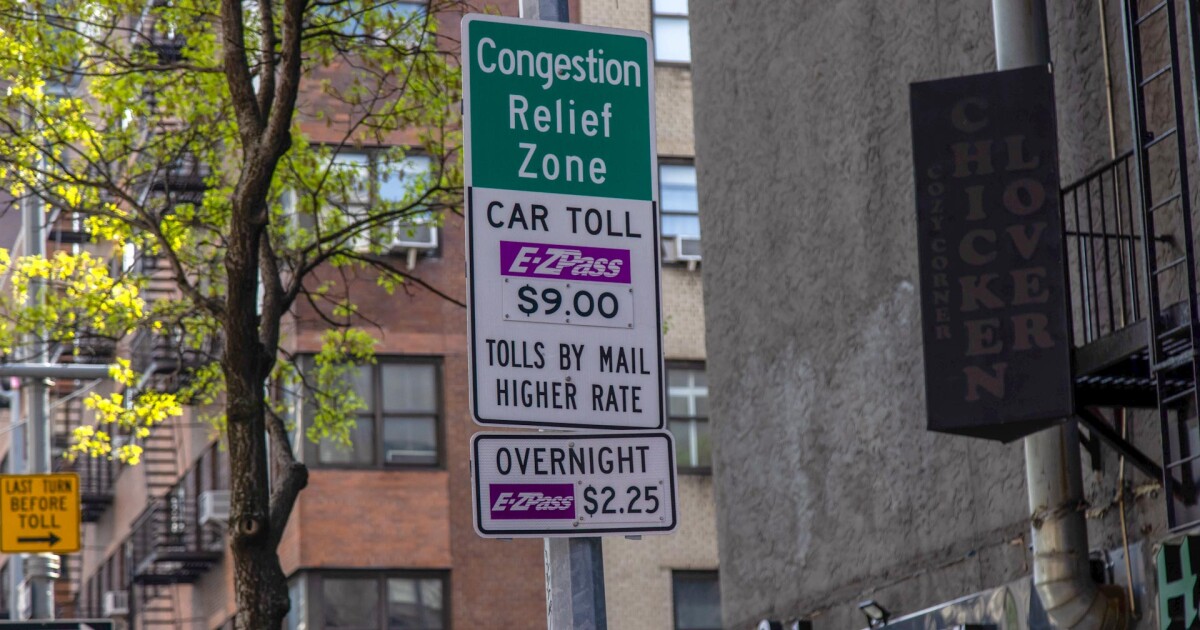Report says congestion pricing’s benefits reached New Jersey
2 min read

Bloomberg News
New York City’s congestion pricing toll has cut Manhattan traffic delays by 25% and reduced gridlock in nearby New Jersey counties by as much as 14%, undercutting fears the policy would worsen traffic outside the city, according to
Time lost due to traffic in Manhattan fell 28% from Jan. 5, when the toll launched, through April 26, with congestion pricing accounting for a quarter of that drop, according to the report, which was released Wednesday.
The program — the first of its kind in the U.S. — charges most motorists $9 during peak hours to enter Manhattan south of 60th Street, excluding the West Side Highway and FDR Drive. It aims to reduce congestion, curb pollution and generate $15 billion to modernize the city’s transit network of subways, buses and commuter rails.
Critics — including New Jersey’s governor, who tried
“Contrary to pessimistic expectations, the congestion pricing program is not causing traffic to be diverted outside the congestion relief zone,” said Rachel Weinberger, RPA’s vice president of research strategy. “As more people choose transit, trips to Manhattan by car are averted, resulting in less, not more traffic in the Bronx, Bergen County and all around the region.”
Across adjacent areas, including the city’s outer boroughs, Long Island, Westchester County, and parts of New Jersey, time lost in traffic declined by 9% overall, according to the report. The RPA based its analysis on data from Waze, the crowd-sourced navigation app.
From January through May, about
“By every possible standard, congestion pricing is a success,” Janno Lieber, the MTA’s chief executive officer, said Wednesday during an event highlighting upgrades to Metro-North rail stations that serve the Bronx and the city’s northern suburbs. “It’s reduced congestion dramatically.”







